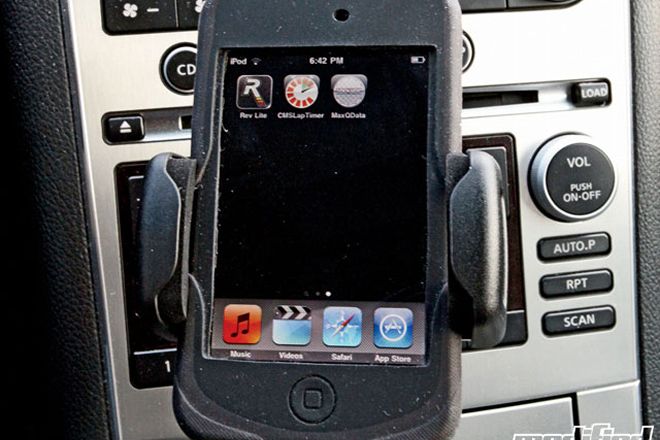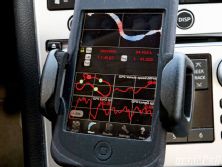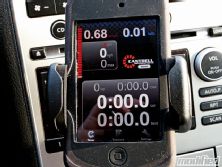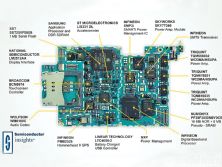With more than 100,000 apps and four-billion downloads, Apple's iPhone has taken the world of mobile communication and entertainment by storm. From college humor apps like the Bad Pickup Line Generator and Fart Fone to highly useful apps like Navigon and QuickOffice, the iPhone is an incredibly powerful tool with an app for every occasion. And thanks to its onboard GPS receiver and three-axis accelerometer, your iPhone has the potential to be a very useful tool at the racetrack. And I mean for more than just texting the wife that you're "working late."
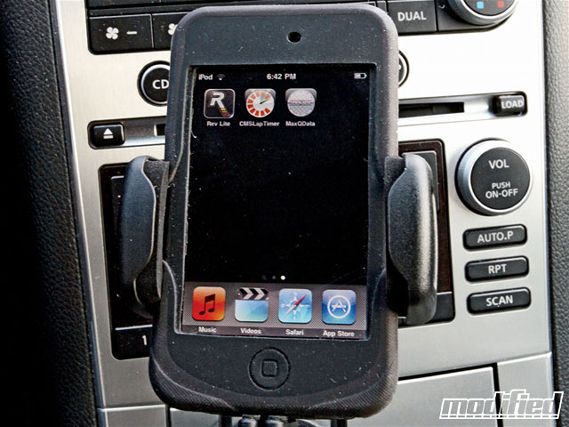 |
iPhone App Education - Tech Talk
|
iPhone App Education - Tech Talk
The range of lap timer and data acquisition apps available for the iPhone is already quite impressive. Pop into Apple's app store and you'll find everything from free basic lap timers like Cantrell Motorsports Lap Timer to more sophisticated apps like Harry's Lap Timer ($5.99-$12.99) to multi-functional but pricier apps like Devtoaster's Rev2 Pro ($39.99) that also offers OBD-II connectivity and CEL code reading and clearing. But just how accurate is the data produced by these apps, and can they effectively replace pricier but accuracy-proven GPS- and accelerometer-based lap timers like the $750 DriftBox I use for a lot of my track testing?
Racelogic's DriftBox, which is quite compact and very easy to use, is equipped with a 10Hz GPS chip as well as several motion sensors or accelerometers. Speed, position, acceleration and drift are measured 10 times a second, providing an accuracy of 0.25 degrees, 0.1 km/h and 0.01 g. That's so accurate that the DriftBox is being used by several professional drifting series to measure yaw angle (or drift angle) as well as speed and position. I've also tested my DriftBox against a beacon-style lap timer and a transponder-based system and found it to be very accurate in relation to both. You also shouldn't overlook the fact that the DriftBox and other GPS/motion sensor data acquisition systems (eg. TraqMate and Racepak G2X) include data analysis software as well as large communities that share track maps and tech tips.
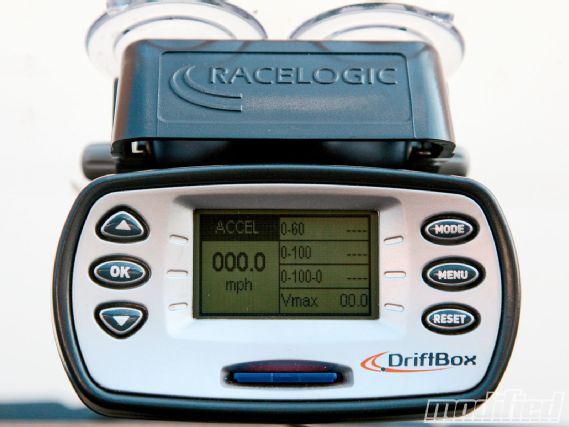 |
iPhone App Education - Tech Talk
|
iPhone App Education - Tech Talk
Although Apple never officially released specs on the iPhone's internals, several electronics geeks have dissected their iPhones in pursuit of online fame. This has resulted in some reliable information on its GPS receiver and accelerometer. The iPhone reportedly uses a 1Hz PMB 2525 Hammerhead II GPS chipset, which measures position at 1-second intervals and has a moving accuracy of 5 meters (16.4 feet) and a steady-state accuracy of 2 meters (6.5 feet). That's significantly less accurate than the GPS chip in the DriftBox, and it's also worth noting that the DriftBox is equipped with a plug-in magnetic antenna you can throw on the roof of your car for improved satellite connectivity, whereas the iPhone is dependant on its internal antenna and falls back on the far less accurate cellular and/or wi-fi options for positional data when its satellite reception is weak.
So although the iPhone's GPS chipset may limit the usefulness of data acquisition apps given its lower sample rate and accuracy compared to the DriftBox, its onboard ST Microelectronics LIS331DL motion sensor/accelerometer is very sensitive and accurate. With a data output rate of 100Hz or 400Hz (Apple has set it to 100Hz), it can be scaled to read motion in a range of +/- 2G like (the iPhone's default) or +/- 8G. For racing purposes, you're never going to pull 2G in a corner or braking zone, so this sensor is very well suited to on-track data acquisition and its sample rate of 100Hz is more than fast enough to provide enough data points to plot an accurate g-force map. Although these specs give us some insight into the functionality of the iPhone as a lap timer and data acquisition system, what we all really want to know is how well these apps work in the real world. After all, no matter how good or bad the iPhone's hardware may be, if the software doesn't make full and proper use of the GPS and motion sensor data, then the end result will undoubtedly be disappointing.
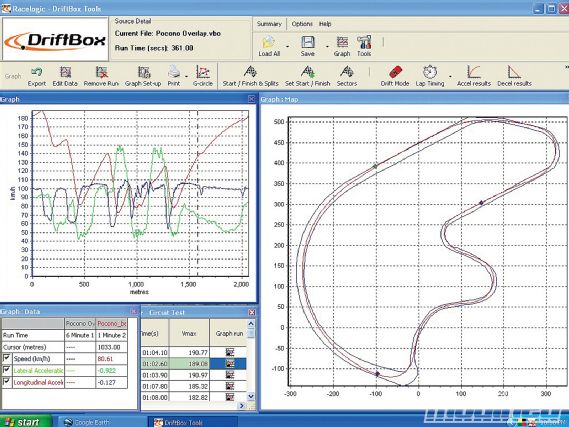 |
It may not be as cool or convenient to use as an iPhone, but Racelogic's Driftbox is a highly accurate data acquisition system with easy-to-use software.
|
It may not be as cool or convenient to use as an iPhone, but Racelogic's Driftbox is a highly accurate data acquisition system with easy-to-use software.
Based on my own limited testing of these apps versus my DriftBox, the results were mixed at best. With all three of the tested apps (Rev2 Lite, Cantrell Motorsports Lap Timer and MaxQData), lap time, speed and positional data (eg. track mapping) were very inconsistent. In fact, the lap timing function failed to recognize the start/finish line as often as 50 percent of the time with these apps and showed speeds as high as 200 mph, even though I never exceeded 100 mph at the test track.
As for the g-force readings generated while accelerating, braking and cornering, these more closely resembled the data recorded by the DriftBox but were still surprisingly variable from app to app. Rev2 has software calibration for the three-axis motion sensor, and as a result, its g-force data most closely resembled what the DriftBox recorded, but MaxQData produced far more variable and questionable g-force data perhaps because of its lack of sensor calibration software.
These observations and testing are by no means comprehensive or even terribly scientific, but they do raise some interesting questions about the usefulness of the iPhone as a track-day lap timer and data acquisition system. My initial impression is that the iPhone's onboard GPS chipset simply isn't powerful enough to provide the required positional accuracy needed for good on-track data acquisition and that no software work-around is going to fix this hardware limitation. On the other hand, the onboard accelerometer is highly sensitive and with proper software calibration appears to provide some solid g-force data. I have yet to test some of the more fully developed paid apps like Rev2 Pro and Harry's Lap Timer Pro, so perhaps they've achieved a level of accuracy the free apps I tested have not. I'd love to hear from you if you've had a chance to test one of these paid apps against a well-established data acquisition system.

